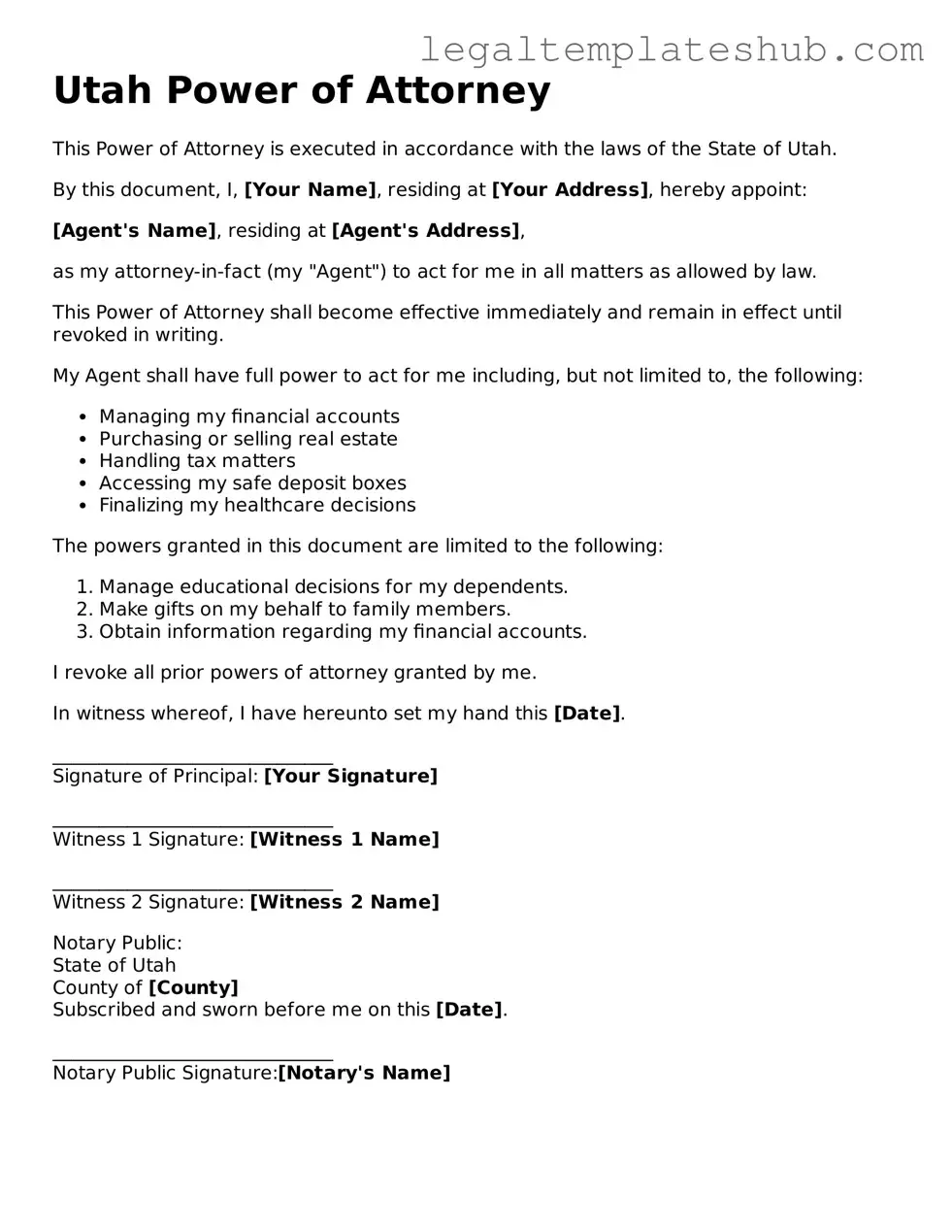Printable Power of Attorney Document for Utah
The Utah Power of Attorney form is a legal document that allows one person to grant another individual the authority to act on their behalf in various matters, such as financial or medical decisions. This form ensures that your wishes are respected even when you cannot make decisions for yourself. To take control of your future, consider filling out the form by clicking the button below.
Access Editor
